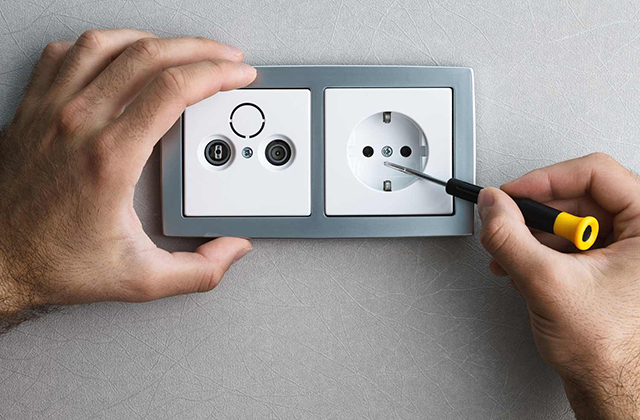The phrase: “Electricity How” – A conundrum at the least?
According to Google 368,000 searches on the keyword phrase “electricity how” were conducted globally in one month. What are people asking or looking for? Electrician Brisbane 24 hours is here to please you, from repairs, Diagnosis rectification work, New Appliances, Air conditioning to switchboard upgrades, safety switch installs
Certainly, electricity is one of the great mysteries.
On the one hand, it is everywhere in our ordinary daily lives. We simply wouldn’t know how to live without it today. Virtually everything we do is powered by electricity.
So, in one sense it is very familiar, and commonplace.
We also know it can be very dangerous, even lethal.
But, what is electricity?
I do not pretend to really understand it. But, I find it fascinating and worthy of discussion and speculation.
To that end, there is a website sited below I find entertaining and stimulating.
One of the missions of this site is to allow people to dialog and speculate and share information and ideas about electricity. Some things will be very down to earth and practical, others very esoteric and almost metaphysical.
This short article is intended to stimulate a discussion and get the ball rolling so to speak. You are invited to participate by leaving comments or contributing guest blogs.
Here are some thoughts from a non-scientist, non-electrician, non-historian, just a humble math teacher.
Our ancestors were vaguely aware of electricity in the form of lightening and static electrical sparks. They also were aware of magnetism via lodestones (were there any other magnetic materials they knew of?). However, they probably didn’t see much connection between these three phenomena. They probably didn’t think these things were very important. Til the house burned down, or the compass failed.
In the 1700’s Ben Franklin began to gain some understanding of electricity to the point he invented the lightning rod and the battery. In fact, one could argue the American Revolution hinged on Ben’s fame as a scientist when he visited France on the Revolution’s behalf.
In the 1800’s the great experimentalist Michael Faraday was the first to demonstrate the intimate connection between electric current and magnetic forces with his discovery of Faraday’s Laws. Then, the great physicist James Clerk Maxwell was able to construct a mathematical model of electromagnetism known as Maxwell’s Equations.
Thus, electricity and magnetism were irrevocably united. Indeed, one can not have one without the other. There is one Electromagnetic force. Magnets move and induce electric current, and current creates magnetic force.
Indeed, Maxwell’s equations became the basis of modern electrical technologies.
Furthermore, Maxwell’s equations yielded the concept of the electromagnetic wave, of which light is just one example. Electromagnetic waves travel at varying frequencies, but with one constant speed which is invariant regardless of the movement of the observer. This speed is called c, the speed of light.
This invariant speed of light in turn led the physicist Albert Einstein to create his famous Theory of Special Relativity in 1905. This totally altered forever our concept of time and space. (General Relativity in 1915 was an even greater tour de force which explained the relationship of mass and gravity to space-time, but that’s another story for another time.)
But, electricity was just getting warmed up!
The best was still ahead.
In the late 1800’s and early 1900’s, the greatest electrical engineer of all time, Nikola Tesla, applied Maxwell’s equations and invented the AC electric dynamo which became the basis of our modern industrial revolution. The original was of course driven by mechanical and hydraulical (sic) concepts.
Then came the amazing Richard Feynman, et. al.
Quantum mechanics was developed by several great physicists in the early 1900’s. Guys like Bohr, Heisenberg, Schrödinger, and Dirac developed the quite unintuitive theory of quantum mechanics after Max Planck and Einstein made their observations of the quantum nature of light.
But, how did electricity fit in?
Feynman and others developed the first quantum treatment of electricity and light, known as QED, Quantum Electro Dynamics.
Talk about non-intuitive.
What is an electron?
Is it a point or a wave?
No one really knows. Both, neither, or something wholly mysterious?
When measured it seems to be always an infinitesimally small piece of matter with some mass and something called charge, and “spin”.
But, when observed it seems to somehow travel in all possible paths from one point to another simultaneously with most of the paths somehow canceling out. This is indisputable and is what explains many otherwise mysterious phenomena.
Indeed, it can be experimentally verified that an electron somehow passes through two slits at the same time. This is the famous double slit experiment that verifies the amazing quantum equations governing the electron’s behavior
This can probably be best understood by a layman by reading Feynman’s great book, QED. In my opinion, this is the best “look” into the mind of a genius that exists.
If this confuses you, you are in good company. And, I don’t mean “yours truly” even though I don’t pretend to even begin to understand it all.
And, I haven’t even mentioned Bell’s Theorem which is truly mind blowing. I may discuss it and several other ideas in an expanded article on the website.
Oh yes. The better company?
The brilliant physicist of QED fame, Nobel Prize winner, Richard Feynman, said that anyone who claims to understand QED proves they don’t understand it at all. And, He invented it.
The so called “wave” is a mathematical “fiction”. The electron satisfies a mathematical differential equation called the Schrödinger Wave Equation. But, its solutions are what are called complex functions. They don’t really have any intuitive physical interpretation. The Equation just happens to be similar in form to equations that do represent real physical waves. But, in this situation there is nothing physical they model. Their solution is called “amplitudes”, which yield probabilities when “squared”.
So, here we are in the 21st century. Much of our modern technology, think Laser et al, rests on QED, which in turn is a theory we have no real physical understanding of other that what can be described as “weird” physical experiments.
Of course, nature also depends on this weird physics. Recently, it has been discovered that photosynthesis, the basis of all life on earth, depends on a quantum mechanical effect.
God only knows where Bell’s Theorem will lead us. Perhaps Dr. William Tiller’s great ideas will help us. Another discussion for another day.
Well, this article just scratches the surface of addressing the question of “Electricity How”. I don’t even know whether to end it in a period or question mark.
And, to engage in the further conversation you are invited to visit us at [http://electricityhow.com/] and leave your comments. Oh yes, there is an interesting free report there on Practical Electricity too.
This article was written by Craig Hane, Ph.D., Chairman, QPI, Inc.
Article Source: http://EzineArticles.com/expert/Craig_Hane,_Ph.D./743295
Article Source: http://EzineArticles.com/4906412

